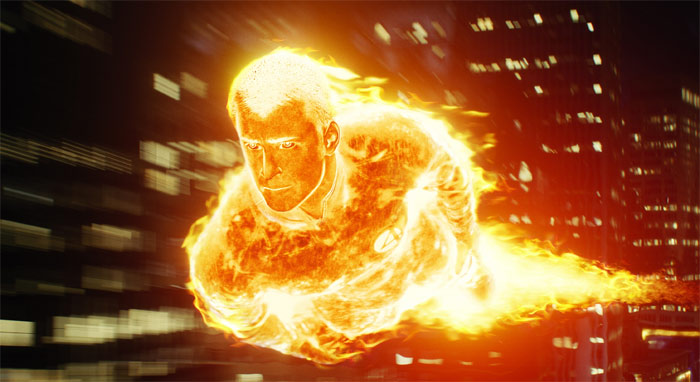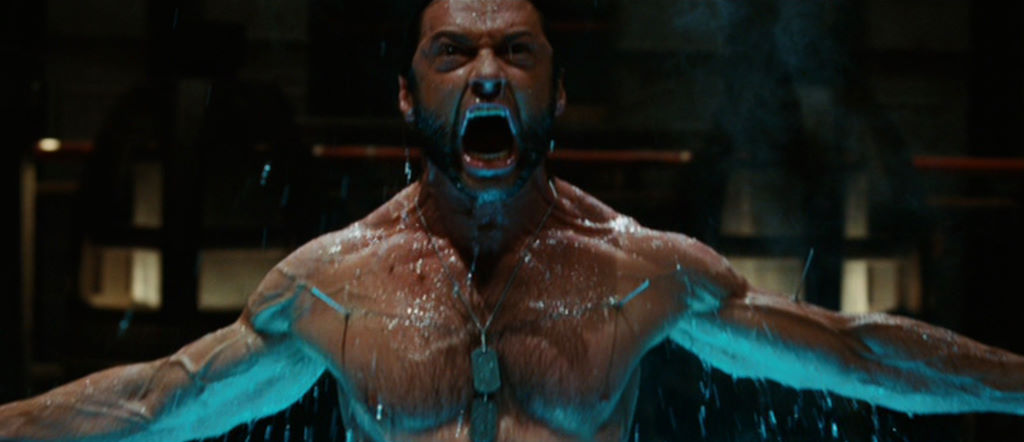Last updated on August 18th, 2022 at 08:19 am

So, you’ve come here to take your flexibility to a new level?
I take it that being average is no longer satisfying?
If advancing this physical skill set is your goal, then you’ve come to the right place.
I’m about to open the vault to my personal tips, hacks, and knowledge pertaining towards mastering your flexibility.
But be forewarned: not everyone is going to find this easy- there will be days when it seems your body is an uncooperative child, and nothing you do seems to work-, and true progress is measured over discipline and time.
Dispel any belief you’re going to become the next Cirque Du Soleil star by the end of a week, month, or year just by following this advice.
“The journey of a thousand miles begins with a single step.” –Lao Tzu
You are like Rey at the start of Episode 7: The Force Awakens– these are your first steps.
And after you start, you will always remain a student. Just when you think you’ve mastered everything, there’s always another mountain ready to climb. Think of this never-ending quest as a path towards self-evolution. You’ll be changing your approach to training constantly, mixing things up, going by trial and error, learning from mistakes and picking up insights into your very psyche just through the challenge of training alone.
Without further ado, these are the directions I advice you take when it comes to training for advanced, super hero flexibility.

Flame On
Here’s a little known secret to priming your body towards working on flexibility.
It works whether you’re a casual stretcher or die-hard yogi by way of hacking into your own body.
We talk about the importance of warming up before a workout to get the blood flowing through your body and loosening things up. And the same principle is applicable towards flexibility. Here’s how it works.
In the context of stretching and flexibility, our muscles love to stay at least 1-2 degrees above normal temperature [1]. The warmer our muscles become, the easier it is for them to lengthen. This is due to the increase of circulation and blood flow to the muscles and connective tissues, making them more ‘elastic’ and less ‘resistant’ to stretching.
The colder the body, the more restriction there is within the muscles and connective tissues, thus stretching becomes more challenging.
Staying warm is essential for dancers, martial artists, gymnasts, and, notably, contortionists, who especially need to stay warm in sensitive places like the lower back before engaging in extreme back bends. The longer the body remains warm, the greater the amount of time there is to train and perform. If you’ve ever wondered why dancers wear leg or back warmers, it’s to keep the heat insulated on their muscles so they can train safely and effectively.
Now, in case you’re not convinced this technique is real, take a look at this study here, which found that, “Heat is beneficial in increasing muscle and ligament flexibility and may help reduce athletic injuries, but cold treatment may have the opposite effect.”
Thermotherapy, [2] aka, Heat Therapy, is also an acceptable form of therapy towards addressing arthritis, pulled muscles, rehabilitation, and inflammation, amongst others.
What’s great about this hack is that it can be done almost anywhere before training.
You have a few options here; so pick and choose which one works best for you:
- After a moderate to intense workout
- After staying in a sauna
- After a hot bath/shower
- After a few minutes of HIIT or Tabata Training
If you’re tired after a long day of work, you can easily make your stretching more effective just by hitting the shower and then going on with your training. Any type of heated yoga class like Bikram or Hot Yoga combines the best of worlds, filling in the gap for flexibility training with the power of heat therapy.
No matter what you decide, turning up the heat accelerates your training efforts.

Supplement With Tools
No man is an island.
Sometimes, we need a little extra help with our training.
And, one of the ways to increase our training while also giving us more options to work with is the incorporation of tools.
I’d say the relationship between tools and flexibility is parallel to that of dietary supplements. These are not going to replace your actual training, whether that’s sticking to an assortment of stretches or practicing yoga. But they can help you go places your body normally couldn’t on its own.
What do these tools include?
*Foam Rollers *Straps *Stretching Machines *Lacrosse or Tennis Ball(s) *PVC Pipe
*Resistance Bands *Inversion Tables *Exercise Ball *Yoga Blocks *Stretch Barre
*Yoga/Dharma Wheel *Leg Stretchers
Honestly, I can’t keep up with all of these contraptions, and I’m sure there’s more to come in the near future.
Keep an eye out on Kickstarter and give me a heads up if something new comes out.
Otherwise, you don’t necessarily need these tools. But again, if you’re looking to transform your home gym into a super-bender’s paradise, these would all make great additions.
I’ve already gone into foam rolling here on the site, but I’ll sum up the effects of using it as a tool: foam rolling does not maketh a man (or woman) flexible. Instead, it helps to encourage flexibility, much like the aforementioned heat therapy hack I mentioned. It just warms everything up by increasing circulation to the muscles.
Now, if you have the budget to fit one of these tools into your training, I’d have to go with the foam roller. You can easily replace the expensive straps by simply wrapping a towel, blanket, or T-shirt around your legs or feet, and a tube full of tennis balls costs as little as $1.50 at retail stores like Target. (Seriously, I’ve done this before, and always carry one in my purse. Makes for a good defensive weapon and myofascial release tool when on the go. What, did you think I was carrying lipstick in my bag? Pssh.)
As to what your budget demands, you can stick to a basic, smooth foam roller from brands like Gaiam, or really take things up a notch with the medieval torture device known as the Rumble Roller. It’s definitely more expensive compared to the Gaiam roller, but it’s worth every penny. The ridges really dig into your muscles, and it lasts for a long time (if not forever). I’m noticing that my poor Gaiam roller has seen better days due to the fact I own two rambunctious cats that think it’s a scratching post.
On top of your regular training, add these tools to help boost things up.

Build Strength
No, I’m not kidding.
Get strong to become flexible.
For me, my body leans towards hyperflexibility rather than strength. So I’ve had to rectify this by lifting heavy at the gym. As my improvement in the weight room has gone up over the years, I’ve noticed that the stronger I become, the easier it’s been for me to do and stay in advanced yoga poses. These include Crow Pose, Half and Twisted Moon, and Lizard, all which require flexibility and strength.
Flexibility opens the door, getting you into the pose. Strength keeps the door open, helping you to stay in the pose (reaping its benefits).
It’s a balancing act for those of us who want to become extremely flexible, while also maintaining relative strength. While it’s cool to pretend you’re Elastic Girl (or Mr. Fantastic), this super power comes at a price if you neglect your strength.
Sure, I can perform a backbend, and even do it on my forearms with my fingertips just barely scraping past my heels, but what’s the good in doing it if I have a weak back that’s going to snap at any moment? Better to have a strong body that can maintain this extreme position without giving in and risking a nasty injury that could land me in the doctor’s office!
Going to extremes with very loose muscles that are weak makes them more susceptible to injury. This injury can be caused by overstretching, over exercising, or just being sloppy with your form and eagerness to jump into a stretch.
One book I recommend is Stretch and Strengthen by Judy Alter, which really dives deeper into this concept than I ever could in just one article. However, one quote that stood out to me from her book was this:
“Strengthen what you stretch, and stretch after you strengthen!”
So, if you want to be able to chill out in a full split, which involves very open hips and hamstrings, you’re going to have to strengthen those areas. The part on stretching after strengthening aligns with my tip on stretching after a workout to increase body heat and circulation. You’ll yield better results this way then just idly stretching whenever you feel like it.

Go Hybrid
Who says you have to only go one way when it comes to stretching?
Maybe yoga just isn’t for you.
And that’s ok! Or, if you are a yogi, you could always switch things up a bit and alternate between different styles.
From my experience, I’ve learned that advancing my flexibility required going “off mat” as it were, from yoga, and experimenting with different methods. That meant incorporating foam rolling and other tools, or doing hybrid yoga classes that incorporated non-traditional stretches.
I enjoy yoga classes interspersed with interval training, ballet stretches (like a plie), Tai Chi, and Qi Gong. One most days, I’ll be devoting at least fifteen minutes to a calming, albeit deep stretching, Yin routine, only to then jump into an intense Power Yoga class (for about thirty minutes to an hour, time permitting).
Through this, I’ve picked up nifty little stretches and variations on poses that I normally wouldn’t have just by sticking to one style. Branching out and experimentation keeps the process interesting, and invigorating. I’m never really bored, and it feels great to challenge myself with something new!
For straight up stretching, I’d recommend you check out the different types of stretching that exist.
I’ll stick to Passive and Active stretching to keep it simple, but here’s what you need to know about them and how you can incorporate them in your own training:
- Passive Stretching is when you’re stretching using an outside force. This could be a tool (like the ones I mentioned earlier), another body part (using your hands to bring one leg towards your chest while laying on the floor), the wall, or an elevated surface area like a barre or piece of furniture.
- Active Stretching is when you’re contracting only your muscles during a stretch (therefore, there are no outside forces helping you out; it’s just you and your body). Runner’s lunge, hip bridges, and forward bends are all examples.
(If you’re wondering which type is more effective for flexibility, then I’ll refer you to the following study published in the journal Physical Therapy, which looked into the matter. After tracking 33 people following a home stretching program, it was found that neither method of stretching was better than the other. I’d say your best bet is to do both of these to get the most bang for your stretching buck.)
A diet filled with a variety of whole foods is said to be good for you, and I couldn’t agree more with that philosophy when it’s applied towards flexibility. To sum it all up: do not be afraid to deviate from your plan! Add as many techniques and styles as you can, and customize your training.
To quote the legendary Bruce Lee,
“I do not believe in styles… if you just say ‘here I am as a human being. How can I express myself, totally and completely.’ That way you won’t create a style because style is a crystallization. That way, it’s a process of continuing growth.”
Make a Plan
Wanting to become more flexible is only wishful thinking if you don’t have a plan.
You need to visualize what that looks and feels like, and make a concrete plan that’s going to get you there.
Sometimes, it takes hiring a coach who specializes in advanced flexibility training, or partaking in gymnastics, yoga classes, dance, or circus school. I’d so those options are great if you have the money to hire someone who can take the guesswork out of the equation and safely monitor your progress. However, for some of us, that isn’t an option. Now, I’m not going to say you should do some master level contortion in your living room without ever having done it before. Common sense, please. But, you can still make it to some high levels of flexibility if you train mindfully and safely in the comfort of your home. The only drawback is that you’ll have to sit down and plan ahead of time.
Motivation isn’t enough for your training; habit will carry you through the days when the well of inspiration runs dry.
If you’ve ever programmed your own fitness routine, then do the same for your flexibility training.
Every month, organize your weekly schedule for improving flexibility. Pencil in your sessions as you would a doctor’s appointment. Even if all you can afford is five minutes of training, put it in anyway to stay consistent with your training. You’ll maintain momentum to the point that not stretching feels weird.
For me, I assess where I’m at on a weekly basis. If I know I’m going to be training legs on Tuesday, then I’d better make sure my yoga practice or stretching routine includes a lot of lower body “openers”. You can structure your schedule like a conventional body split, working on your upper body Monday and Thursday, your Lower Body Tuesday and Friday, and your entire body Wednesday, Saturday, and Sunday (you could make Sunday a rest day).
If you work a typical 9 to 5, you can either wake up earlier, save the routine before bed (remember the body temperature hack- sometimes, a good warm shower and a stretching routine is just what the doctor ordered for winding down at the end of the day), or do it when you have a break during the day.
Another option is to split your stretching into increments spread throughout the day. Here’s how it works. At 9:30 in the morning, take a 15-minute break to stretch. At 10:30 in the morning, do it again. Repeat this until 12:30, and you’ve already practiced for an hour. Mix and match different times and breaks to find what works best for you.
Another thing I do is be humble and accept that will be days when I have zero time and energy to stretch. I’ve probably had bigger priorities to attend to, and by the time stretching rolls around, I just can’t bring myself to stretch for an hour. I could either make do with five minutes, or train a bit longer the next day to make up for the lost time.
No matter what you decide, set a goal, plan ahead, and make it a habit of devoting as much time as you can afford to stretch every single day.

Follow the Leader(s)
I was, and in a way, still am, like you.
At the beginning, I had no idea how I was going to become flexible, let alone make it advanced levels.
I just held my nose and took the plunge expecting myself to improve. Back when YouTube was fairly new to the home fitness scene, I would play videos made by uncertified, average people, in the hopes of becoming more flexible. None of these people looked like they were flexible, or even in shape. They just had basic stretches for the average Joe and Jane who needed to get started.
That’s when it hit me. Instead of seeing myself as normal, I had to change my perception and visualize myself as elite and skilled as the pros. That meant looking to people that did what I aspired to do. This was advice I was given after graduating from high school, and it’s one I’d give to anyone just finishing their studies as well. While it’s important to set yourself away from the crowd and become your own person, it’s equally as important to choose one, or many, “mentors”, who are doing what you want to do.
They don’t have to know you necessarily in order for their advice to sink in. Thanks to social media, you can learn all their tips and tricks at your own pace without ever meeting them face-to-face (or paying for classes).
For myself, I discovered yoga, and began following an assortment of teachers on YouTube.
As a shout out to the ones who inspired me, here are the teachers and guides I started out with, and continue to practice to at home:
*Tara Stiles *Michael Taylor *Dashama Konah *Esther Ekhart
*Sadie Nardini *Sean Vigue *Ali Kamenova *Lesley Fightmaster
But the inspiration didn’t stop there. Because advanced flexibility has always been my goal, I had to hone in on who were the ones with the best flexibility. Again, your best friend on the cheerleading team doesn’t cut it (no offense to them). You have to aim higher.
For me, that meant observing dancers, martial artists, yogis, gymnasts, and, my favorite, contortionists. From there, I devoted much of my free time towards researching all them. This led me to broaden my personal education towards reaching my goal. I learned that many dancers stretch whenever they have a break in their schedules, in front of the TV, while reading a book, before and waking up from bed. Many martial artists employ a Leg Stretcher machine if they have the budget to invest in one (ok, I don’t own one yet, but it’s on my wish list!). Contortionists were the ones that led me to learn about keeping the body warm for stretching.
In fact, beyond these examples, I’ve even forayed into researching mobility training and physical therapy exercises to stretch and strengthen my entire body, making my practicing all the more balanced and efficient.
I recommend you set aside some time each week to research the heck out of your goal. These are only examples, but learn from example. Follow those who are living and breathing your vision, and if you have the courage to, reach out to them for advice. Perhaps they can mentor you throughout the way! The point is to find quality information from optimal performers. Don’t settle for less.
“If you want to be successful, find someone who has achieved the results you want and copy what they do and you’ll achieve the same results.”
– Tony Robbins
These are the core principles behind my training for flexibility.
I continue to chip away at my training everyday, making progress in a slow, but steady, pace. My final piece of advice is not to rush anything and let intimidation keep you from achieving your dreams. If you want to become a flexible yogi, then start by believing it’s possible.
Don’t give up on yourself, even when it seems like you’ve gotten nowhere. Just bury yourself in your training. Don’t let any outside source in that could sabotage your determination. You will make progress if you follow these steps, in addition to staying consistent.
I wish you all the best of luck with your training.
– Sam, aka, The Dragon
“Believe me, there is no goal, nor a way to reach it. You are the way and the goal, there is nothing else to reach except yourself.”
– Sri Nisargadatta Maharaj
References
[1] http://www.fitandbendy.com/blog2/musings-on-warming-up
[2] https://www.physio-pedia.com/Thermotherapy

SUPERHUMAN SECRETS V.2
NOW UPDATED AND EXPANDED WITH A NEW SECTION & SEVEN BONUSES
USD$29 USD$14.95



